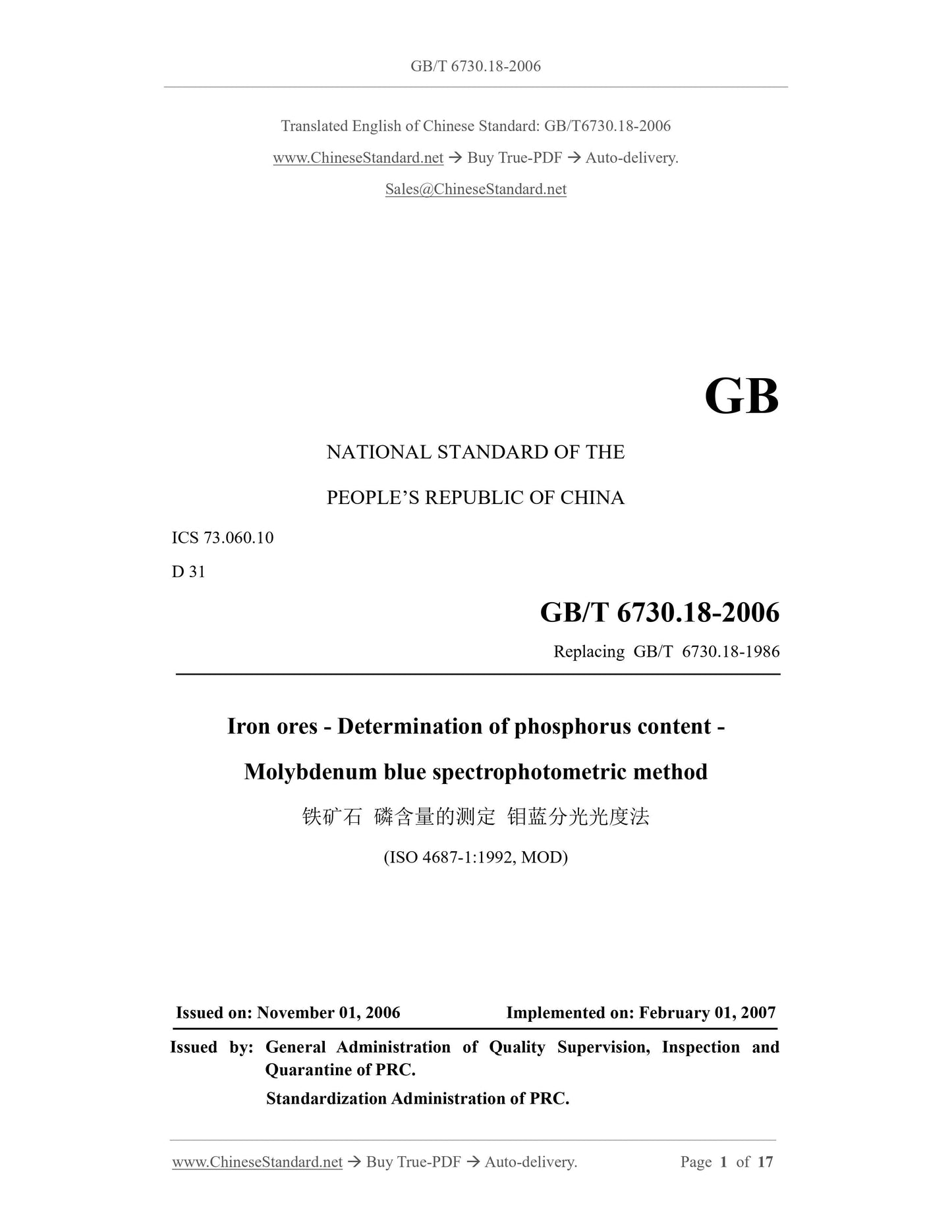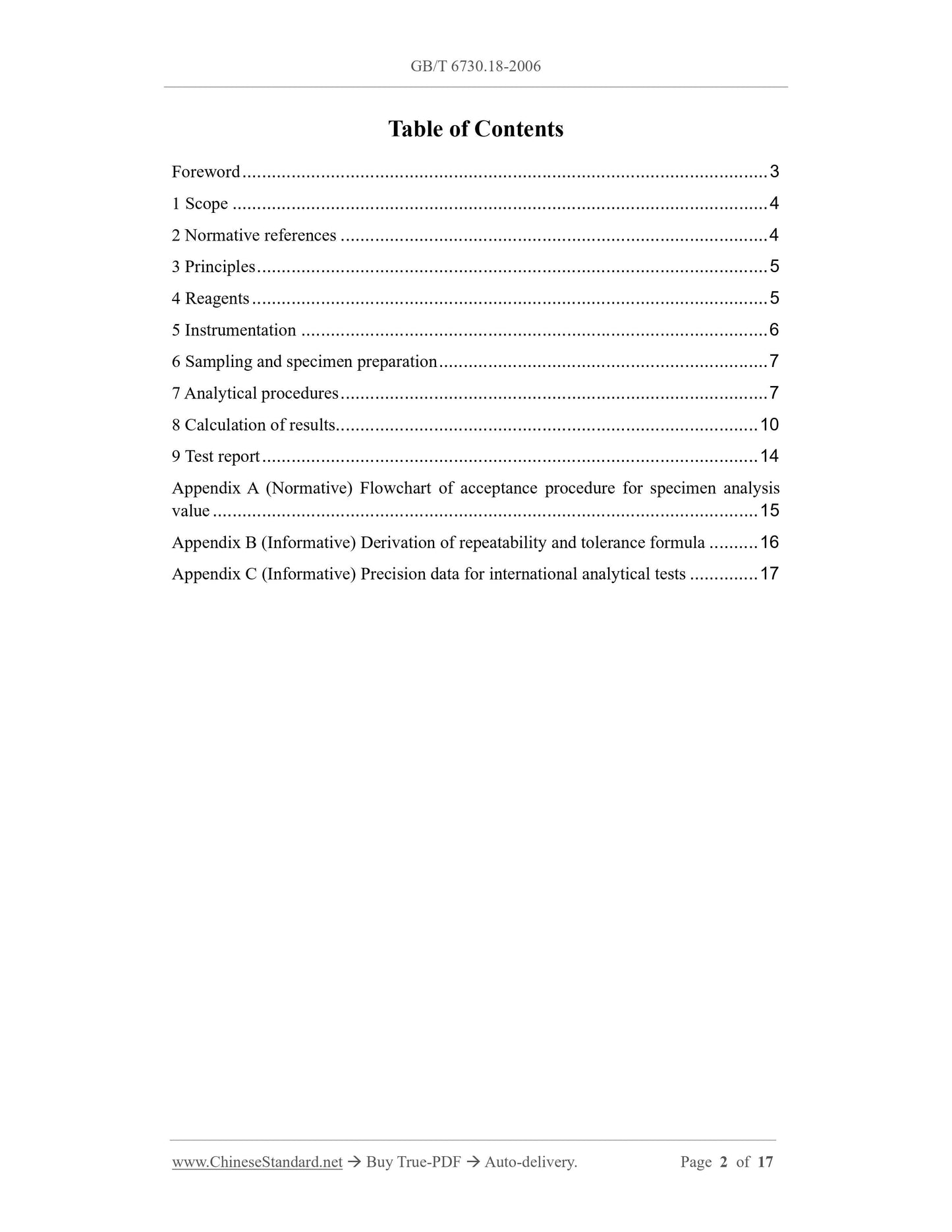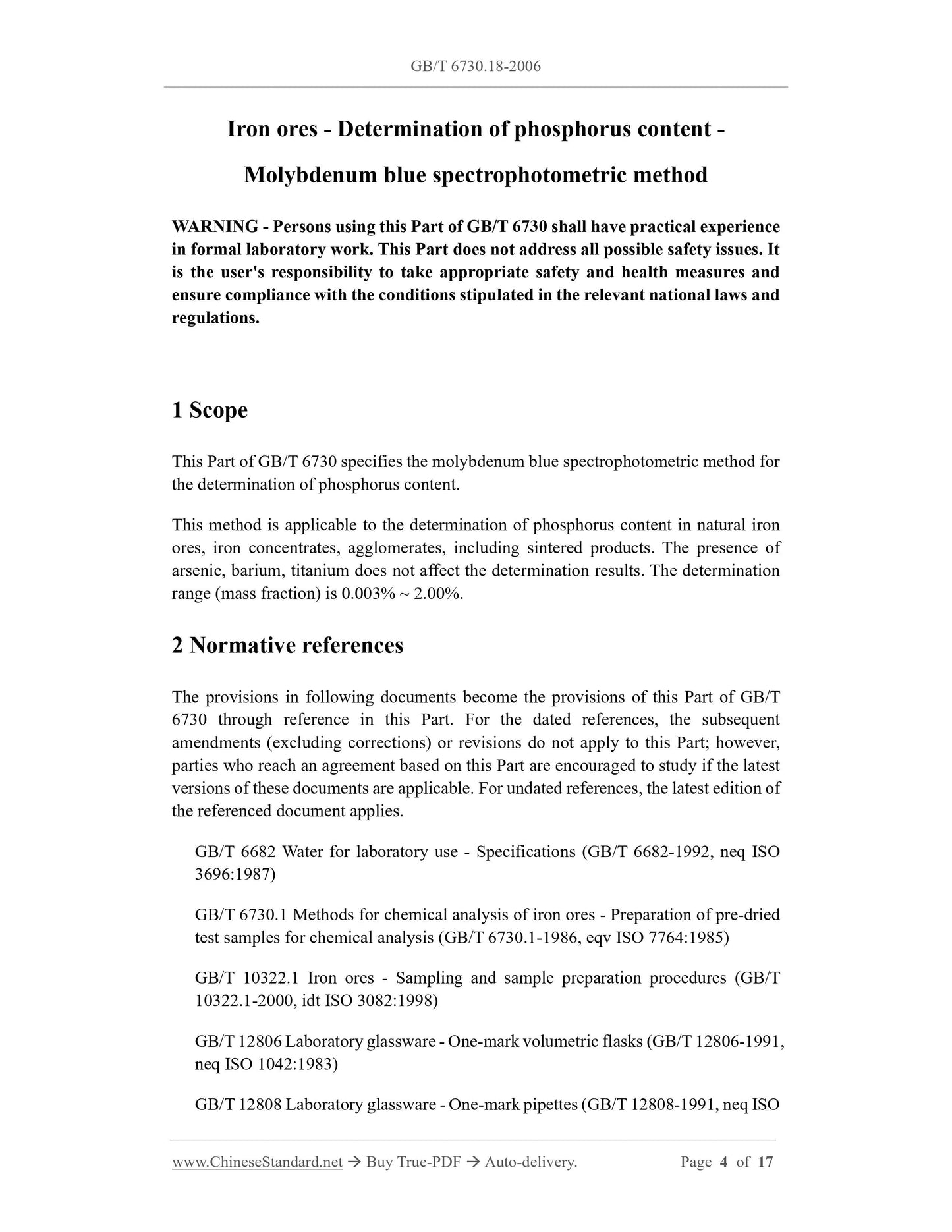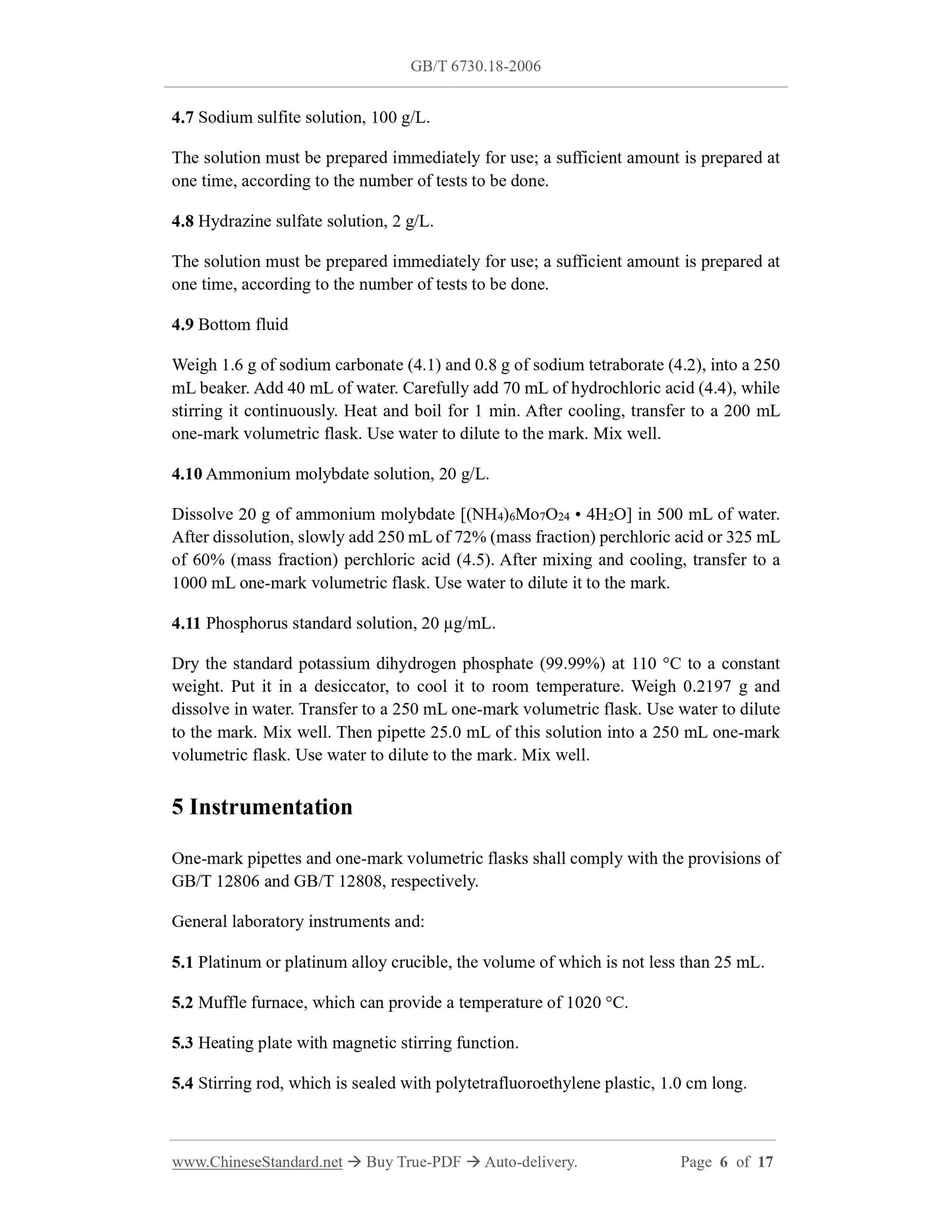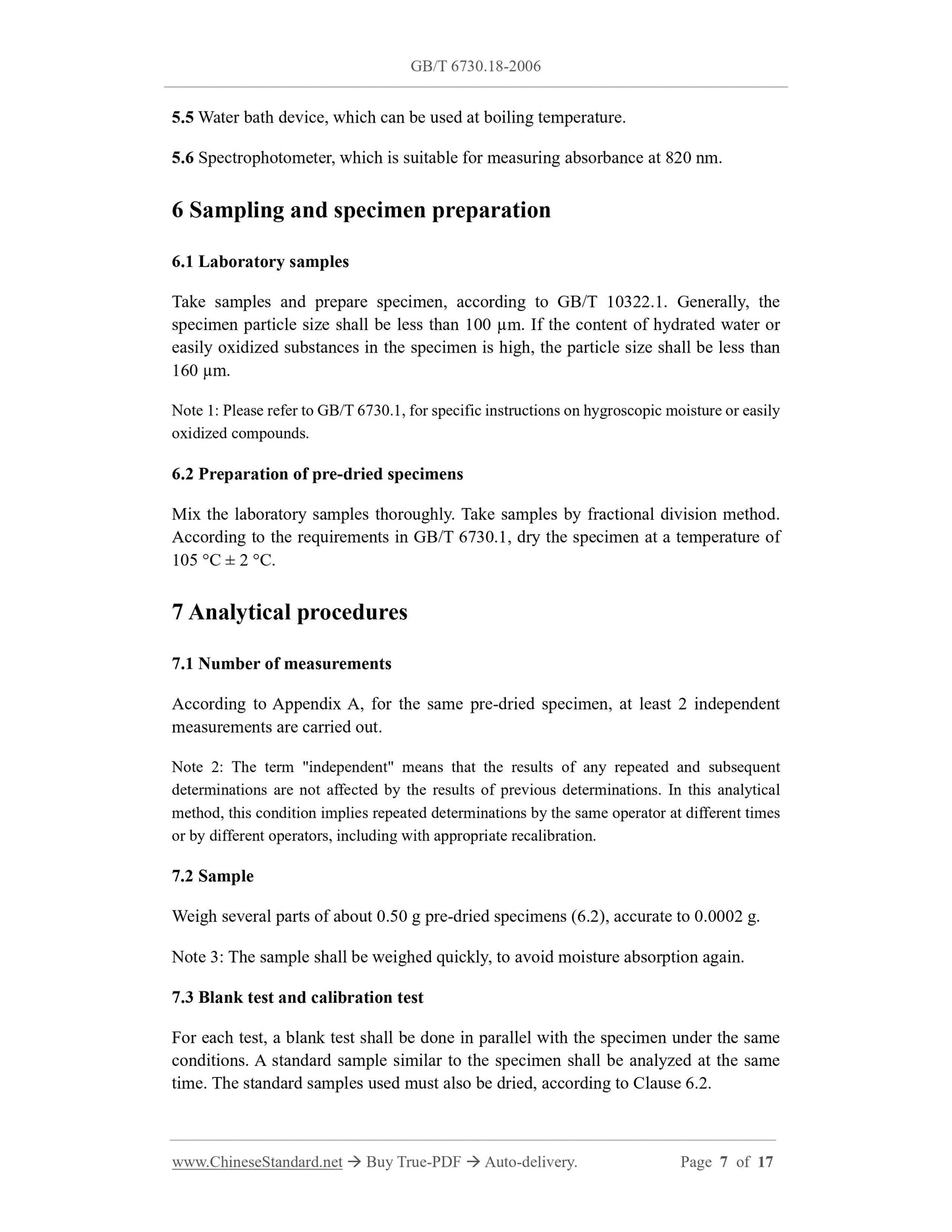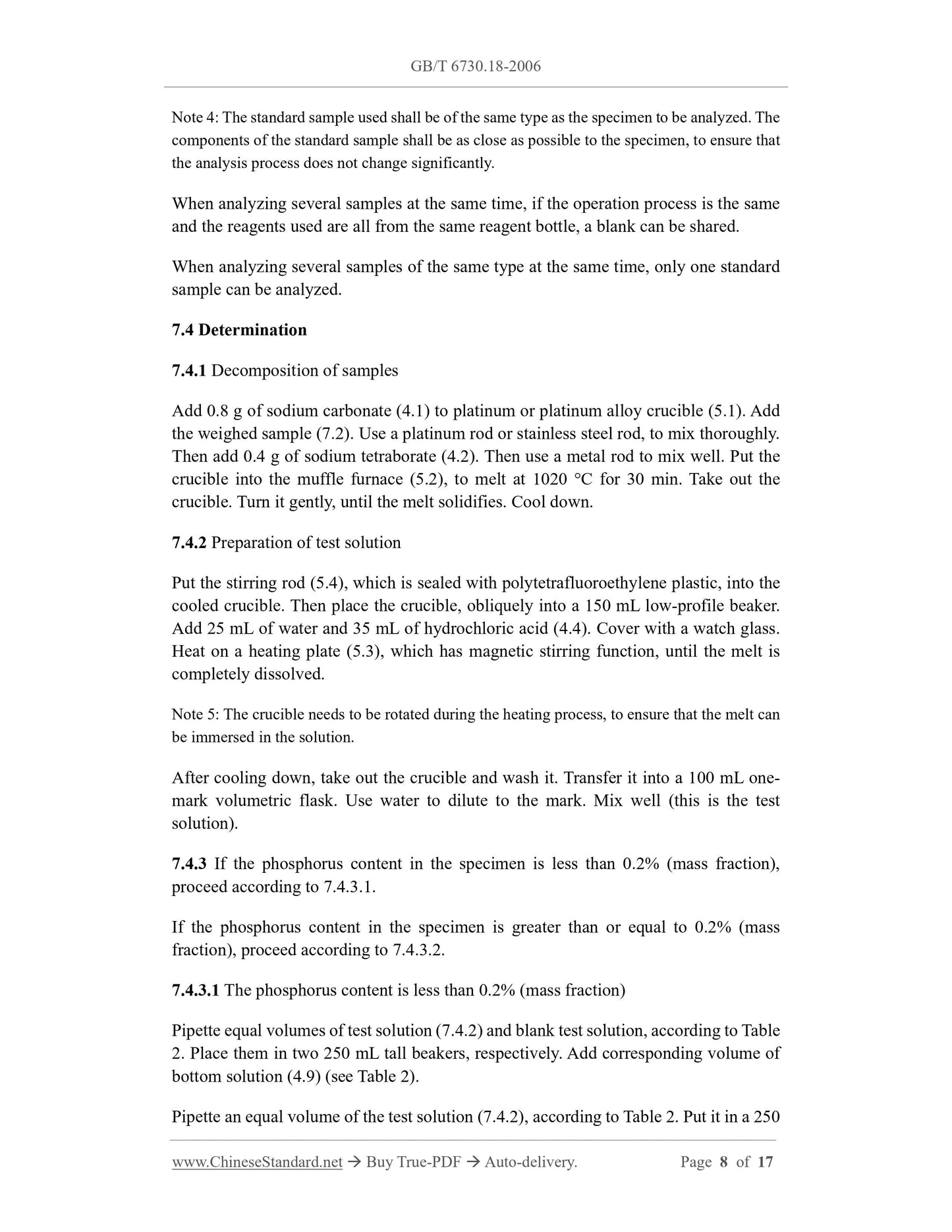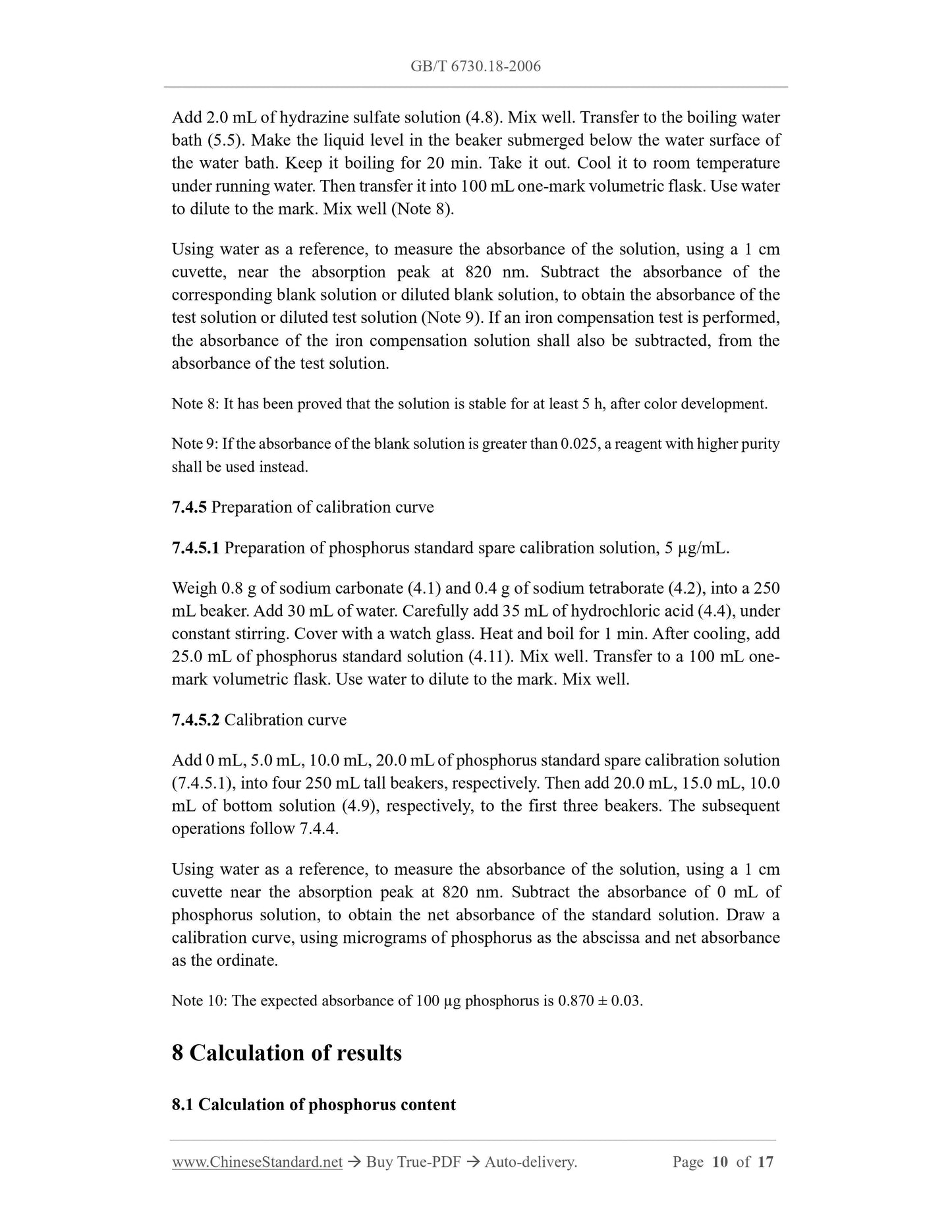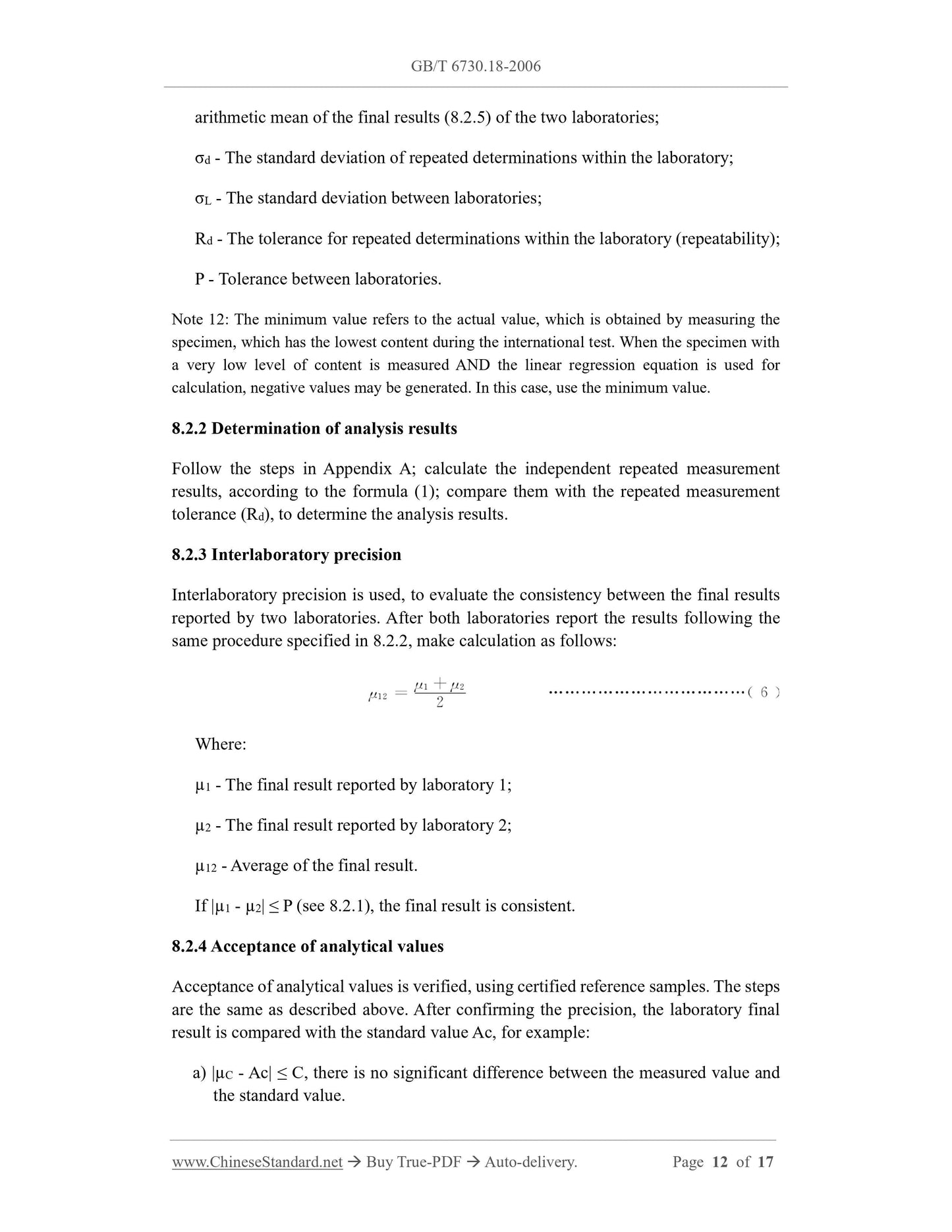1
/
of
8
www.ChineseStandard.us -- Field Test Asia Pte. Ltd.
GB/T 6730.18-2006 English PDF (GB/T6730.18-2006)
GB/T 6730.18-2006 English PDF (GB/T6730.18-2006)
Regular price
$190.00
Regular price
Sale price
$190.00
Unit price
/
per
Shipping calculated at checkout.
Couldn't load pickup availability
GB/T 6730.18-2006: Iron ores -- Determination of phosphorus content -- Molybdenum blue spectrophotometric method
Delivery: 9 seconds. Download (and Email) true-PDF + Invoice.Get Quotation: Click GB/T 6730.18-2006 (Self-service in 1-minute)
Newer / historical versions: GB/T 6730.18-2006
Preview True-PDF
Scope
This Part of GB/T 6730 specifies the molybdenum blue spectrophotometric method forthe determination of phosphorus content.
This method is applicable to the determination of phosphorus content in natural iron
ores, iron concentrates, agglomerates, including sintered products. The presence of
arsenic, barium, titanium does not affect the determination results. The determination
range (mass fraction) is 0.003% ~ 2.00%.
Basic Data
| Standard ID | GB/T 6730.18-2006 (GB/T6730.18-2006) |
| Description (Translated English) | Iron ores -- Determination of phosphorus content -- Molybdenum blue spectrophotometric method |
| Sector / Industry | National Standard (Recommended) |
| Classification of Chinese Standard | D31 |
| Classification of International Standard | 73.060.10 |
| Word Count Estimation | 12,123 |
| Date of Issue | 2006-11-01 |
| Date of Implementation | 2007-02-01 |
| Older Standard (superseded by this standard) | GB/T 6730.18-1986 |
| Quoted Standard | GB/T 6682; GB/T 6730.1; GB/T 10322.1; GB/T 12806; GB/T 12808 |
| Adopted Standard | ISO 4687-1-1992, MOD |
| Regulation (derived from) | China National Standard Approval Announcement 2006 No.11 (Total No.98) |
| Issuing agency(ies) | General Administration of Quality Supervision, Inspection and Quarantine of the People's Republic of China, Standardization Administration of the People's Republic of China |
| Summary | This standard specifies the molybdenum blue spectrophotometric determination of phosphorus content. This standard applies to natural iron ore, iron ore concentrate and build blocks, measuring sintered products include phosphorus content. Arsenic, presence of barium and titanium does not affect the measurement results. Measuring range (mass fraction): 0. 003% to 2. 00%. |
Share
